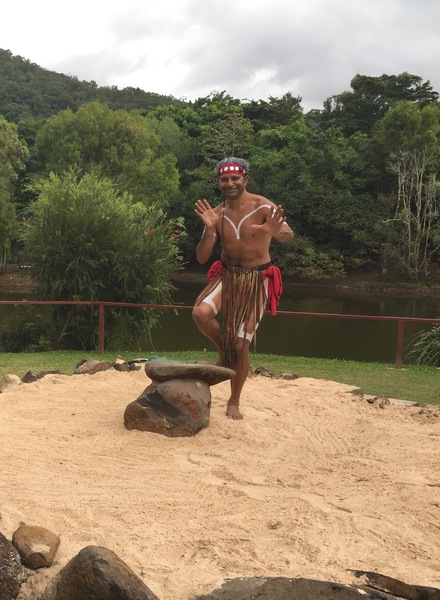Performer puts talent on show with with body paint and art works

It's a must-do for any visitor to TNQ and showcases the world's oldest living culture, dating back more than 40,000 years.
And soon, there will be new feature at Tjapukai Cultural Park for visitors to enjoy.
In between Aboriginal dance shows at Tjapukai, performer Napolean Phillip Oui, whose totem name is Weika, is working on a mural as a new backdrop for the world’s longest running stage show.
Weika, which means the quiet one in Djabugay language, has been showing audiences how to play the digeridoo and “shake a leg” corroboree-style at Tjapukai for 22 years and now trains the new performers.
“I’ve been working on painting a backdrop of a scene where we would meet up and dance,” he said.
The dance performances at Tjapukai have been a vehicle for sharing the authentic culture of the Djabugay people with the world since 1987 and is acknowledged in the Guinness Book of World Records.
“I’ve also painted shields which decorate the Canopy Breezeway and there are a series of my paintings for sale in the Breezeway which show shield designs and the bangga, the traditional underground cooking we do,” he said.
Weika’s talent as a belt maker is sought by staff who go on country to gather traditional decorative items like seeds and shells to embellish their performance outfits.
His kangaroo and crocodile skin belt is elaborate. However, he prefers to keep his body paint simple.
“When you paint up, you don’t use too many colours. It’s mainly white that we use as the other colours are for ceremonies,” he said.
“You need to be proud of what you paint on your body and what you paint depends on your totem.
“Other performers have animal totems, but I am Weika the quiet one so I often do the Djabugay symbol which looks like the McDonald's symbol and I never do that in yellow!”
Tjapukai general manager Bryce Madgwick said Weika was a role model for younger staff by training them to share the culture of the Djabugay people who lived in the World Heritage-listed rainforest of Cairns for more than 40,000 years.

